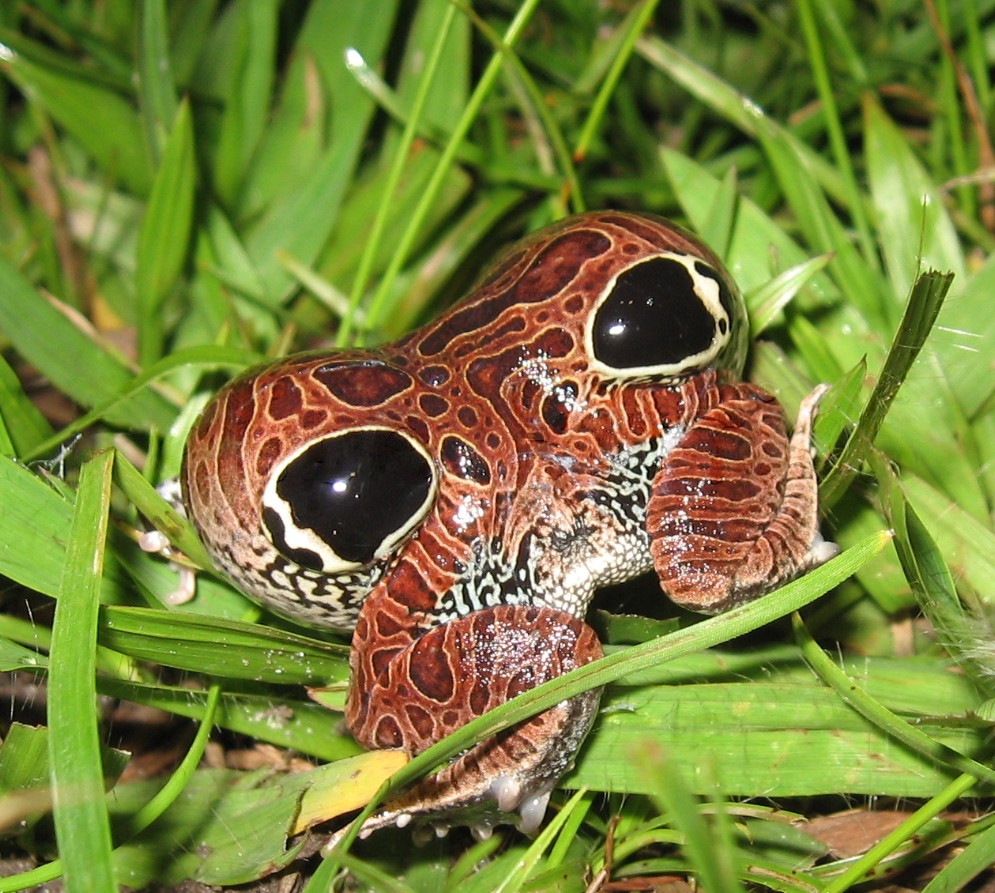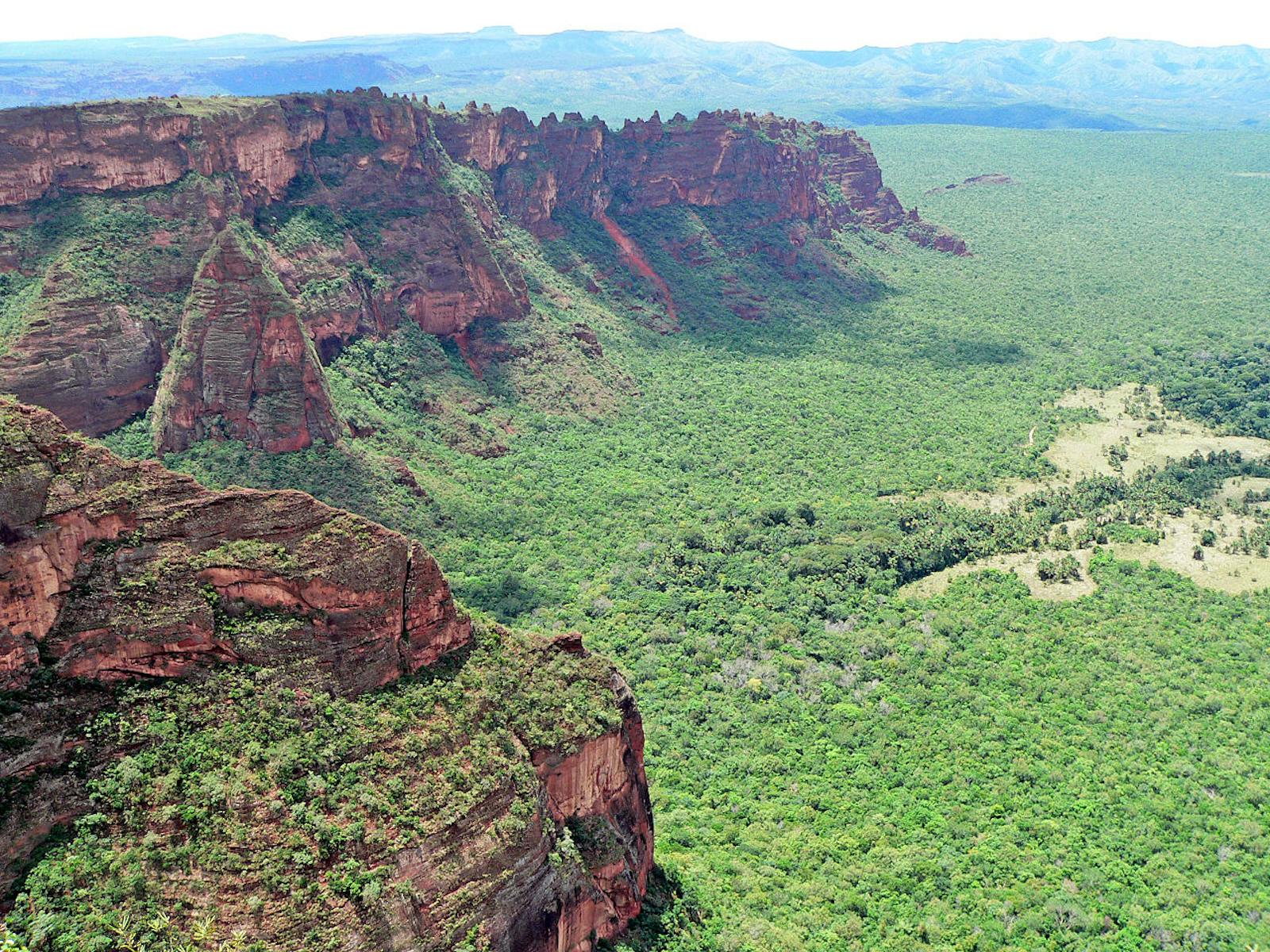Cerrado
The ecoregion’s land area is provided in units of 1,000 hectares. The conservation target is the Global Safety Net (GSN1) area for the given ecoregion. The protection level indicates the percentage of the GSN goal that is currently protected on a scale of 0-10. N/A means data is not available at this time.
Bioregion: Cerrado Savannas (NT13)
Realm: Southern America
Ecoregion Size (1000 ha):
192,106
Ecoregion ID:
567
Conservation Target:
13%
Protection Level:
9
States: Brazil, Paraguay, Bolivia
Measuring up to 1 m in length, the giant armadillo is the largest surviving species of armadillos. Their diet generally consists of termites, which they skilfully hunt by prying open giant mounds with their 20 cm long claws—proportionately the largest of all mammals. They are considered ecosystem engineers since their burrows and life history contribute significantly to shaping the ecosystems around them.
They range throughout central-northern South America and are important residents of the Cerrado ecoregion. The shrublands and grasslands provide an ideal burrowing substrate for these animals to escape the heat of the day and, more importantly, to avoid predators, since they are unable to roll fully into a protective ball, unlike other armadillo species.
%20iStock-480972502.jpeg)
The flagship species of the Cerrado ecoregion is the maned wolf.
Cerrado is the largest savanna region in South America and biologically the richest savanna in all of the world. It encompasses Central Brazil, northeastern Paraguay, and eastern Bolivia. Most of the cerrado is located on large plateaus ranging in elevation from 500–1,700 m. The climate is tropical seasonal. Average annual rainfall varies between 1,250–2,000 mm, and the average annual temperature ranges between 20°–26°C.
The landscape is dominated by cerrado, savanna-like vegetation that grows on nutrient-poor, often deep and well-drained soils. The cerrado vegetation can vary from open field ("campo limpo") to a tall closed forest ("cerradão"). Distinctive plants of the region include the pequi tree, whose fruits are a local favorite, deciduous trees Qualea grandiflora and Byrsonima coccolobifolia, and the timber tree Tabebuia ochracea.
The biodiversity of Cerrado ecoregion is extraordinary. At least 10,400 species of vascular plants, 780 fishes, 180 reptiles, 113 amphibians, 837 birds, and 195 mammals can be found. Most of these species are restricted to cerrado. The percentage of endemic species varies among taxonomic groups, from 4% in birds to 50% in vascular plants.
The cerrado region’s size allows a unique evolutionary theater where species from the largest South American forests (Amazon and Atlantic Forest) and the largest South American dry habitats (Chaco and Caatinga) intertwine and co-evolve. Noteworthy bird species include the vulnerable lesser nothura and cinereous warbling finch, the endangered white-winged nightjar and dwarf tinamou, and the critically endangered blue-eyed ground dove. Mammals of interest include the cerrado mouse, Lindbergh’s grass mouse, pygmy short tailed opossum, maned wolf, and the vulnerable giant armadillo.

Physalaemus nattereri in deimatic behavior. Image credit: Felipe Gomes, Creative Commons
The majority of the cerrado region has either been completely converted or modified in a major way. Most of the large-scale human modification in the cerrado took place within the last 50 years. With the construction of the new capital of Brazil (Brasília), several highways were built, opening up the region to a large process of development. During the 1970s and 1980s, several investment programs financed by multilateral funding agencies, together with generous government subsides, transformed the cerrado into a new agricultural frontier.
Managed pastures and large-scale plantations of soybeans, corn, and irrigated rice were established. As a result, thousands of square kilometers of cerrado were removed without any assessment on the environmental impacts. There are two main national parks in the region, Chapado dos Veadeiros and Emas, the latter is surrounded by agricultural lands.
Agribusiness continues to be the major threat to Cerrado biodiversity. It may reach a steady growth in the next couple of years, but agrarian conflicts and new waves of colonization in Piauí, Tocantins, and Maranhão states that harbor most of the intact cerrado areas will certainly increase the pressure on the remaining original vegetation.
The priority conservation actions for the next decade will be to: 1) identify key areas for further protection; 2) limit agricultural spread and encourage alternatives to monoculture; and 3) encourage the completion of the Ecological Corridor Cerrado-Pantanal connecting Emas National Park to the Pantanal ecosystem, and other projects like it.
Citations
1. Maria C. da Silva, J. 2018. Central South America: Central Brazil, into Bolivia and Paraguay. https://www.worldwildlife.org/ecoregions/nt0704 Accessed November 17, 2018.
2. Cavalcanti, R. B. 1999. Ações prioritárias para a conservação da biodiversidade do Cerrado e Pantanal: Sumário Executivo. Belo Horizonte.
3. Silva, J. M.C. 1995. Birds of the Cerrado Region, South America. Steenstrupia 21:69-92.
4. Anacleto, T.C.S., Miranda, F., Medri, I., Cuellar, E., Abba, A.M. & Superina, M.2014. Priodontes maximus. The IUCN Red List of Threatened Species2014: e.T18144A47442343. http://dx.doi.org/10.2305/IUCN.UK.2014-1.RLTS.T18144A47442343.en. Accessed November 17, 2018.



